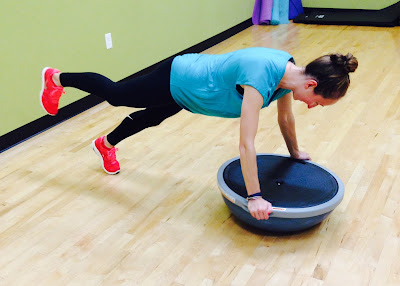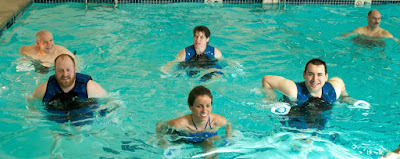It’s
that time of year where we start walking in a winter wonderland. This winter
wonderland is great for the holiday season, but with
winter also comes snow and ice. Losing your balance in these conditions can
lead to slipping and falling and possible injuries. Luckily, there are
exercises you can do to help train your balance and avoid sliding around! Here
are a few:
Stand on One Foot
Stand
near the wall, a rail, or the back of a chair. Staying tall, stand on one leg.
Start with 20 second intervals and work your way up. You can start with holding
on, but try to use only fingertips and eventually using no hands once you are
ready. For an added challenge, try standing with your eyes closed.
Tandem Walk
Walk
heel to toe. Try not to look down at your feet!
Half Roll Exercises
Step Forward and Backward
This
can also be done while doing the tandem walk. Stand on the half roll with one
foot in the middle. Step forward, shifting your weight. Then step backward. Try
not to look down. This can be done close to a wall, but try to work your way to
not using your hands. Make sure you are focusing on shifting your weight!
Switch which foot is in the middle as well.
Squat and Touch
Stand
on the half roll with one foot in the middle. Step forward and slowly squat
down. Try to touch your knee first, then stand back up. Once you feel
comfortable, try squatting down and touching your shin or the insole of your
foot. This can also be done stepping backward on the half roll.
Leg Swing
Stand
with one foot in the middle of the half roll. Simultaneously swing the other
leg forward with the opposite arm (I.e. swing left leg with right arm). Then
swing the leg back, again coordinated with the opposite arm. Stand tall, leg
the swing come from the hip not the knee. Make sure to switch the leg you stand
on.
Blog post by Nikki Courtney.







































